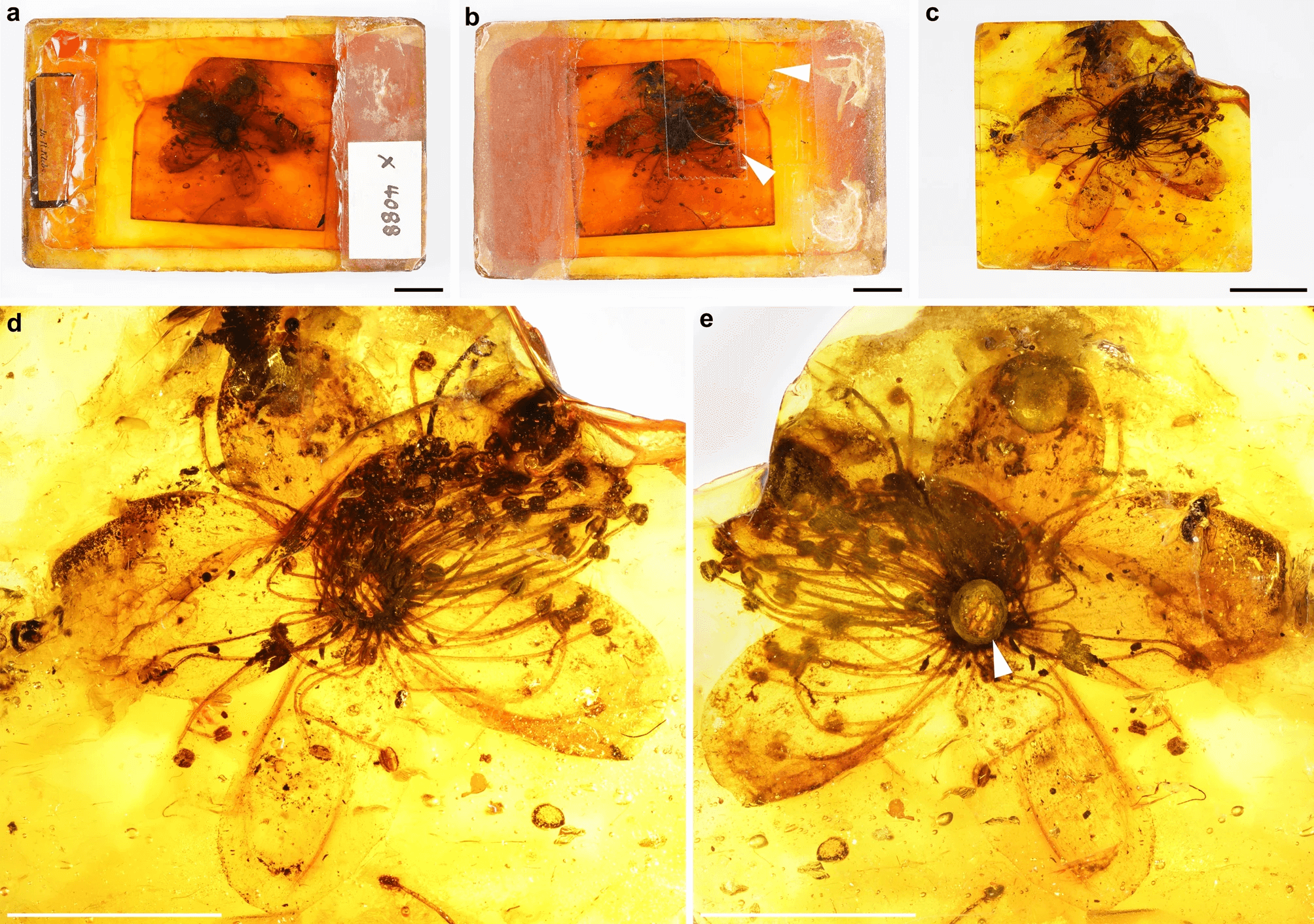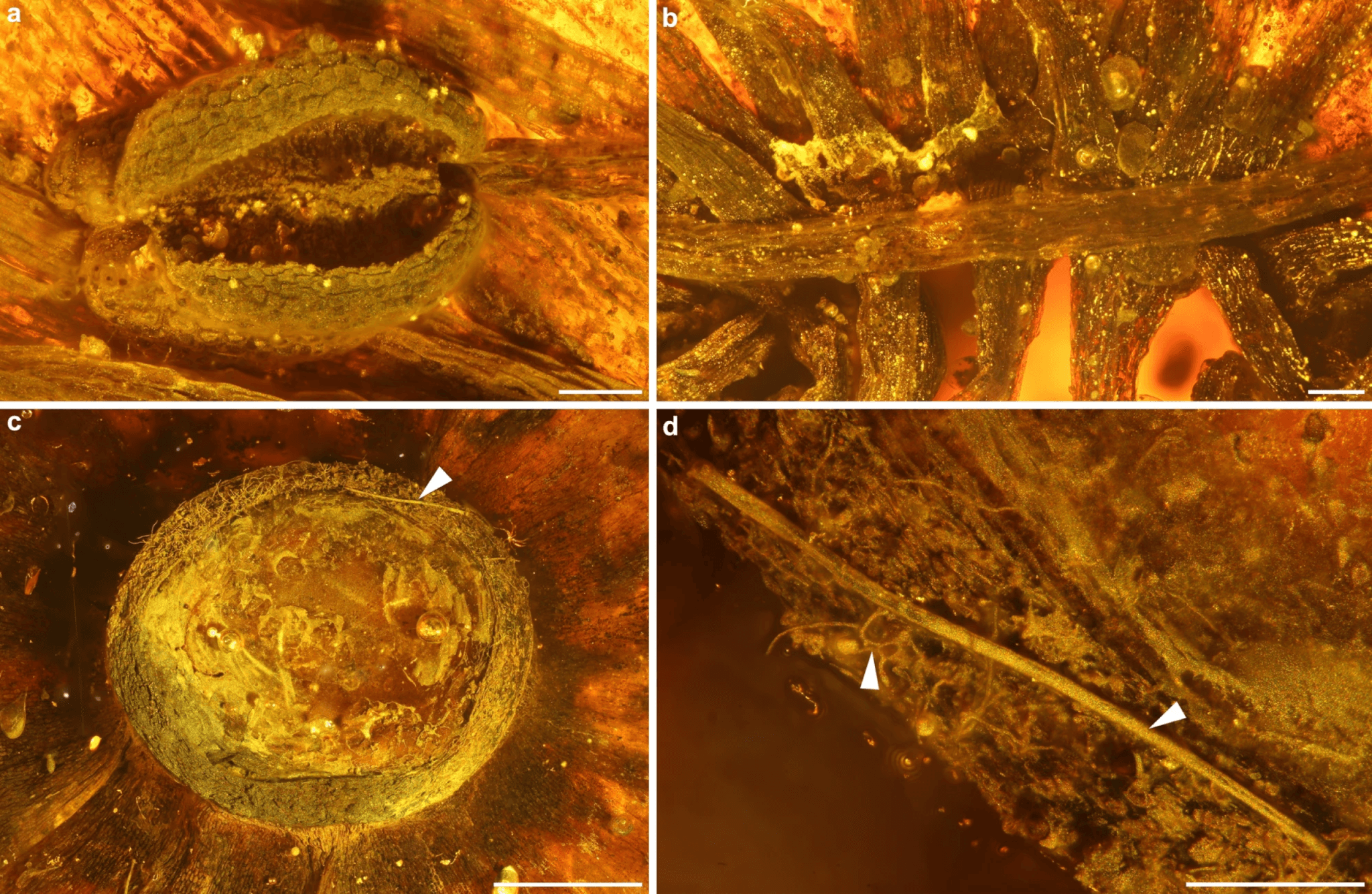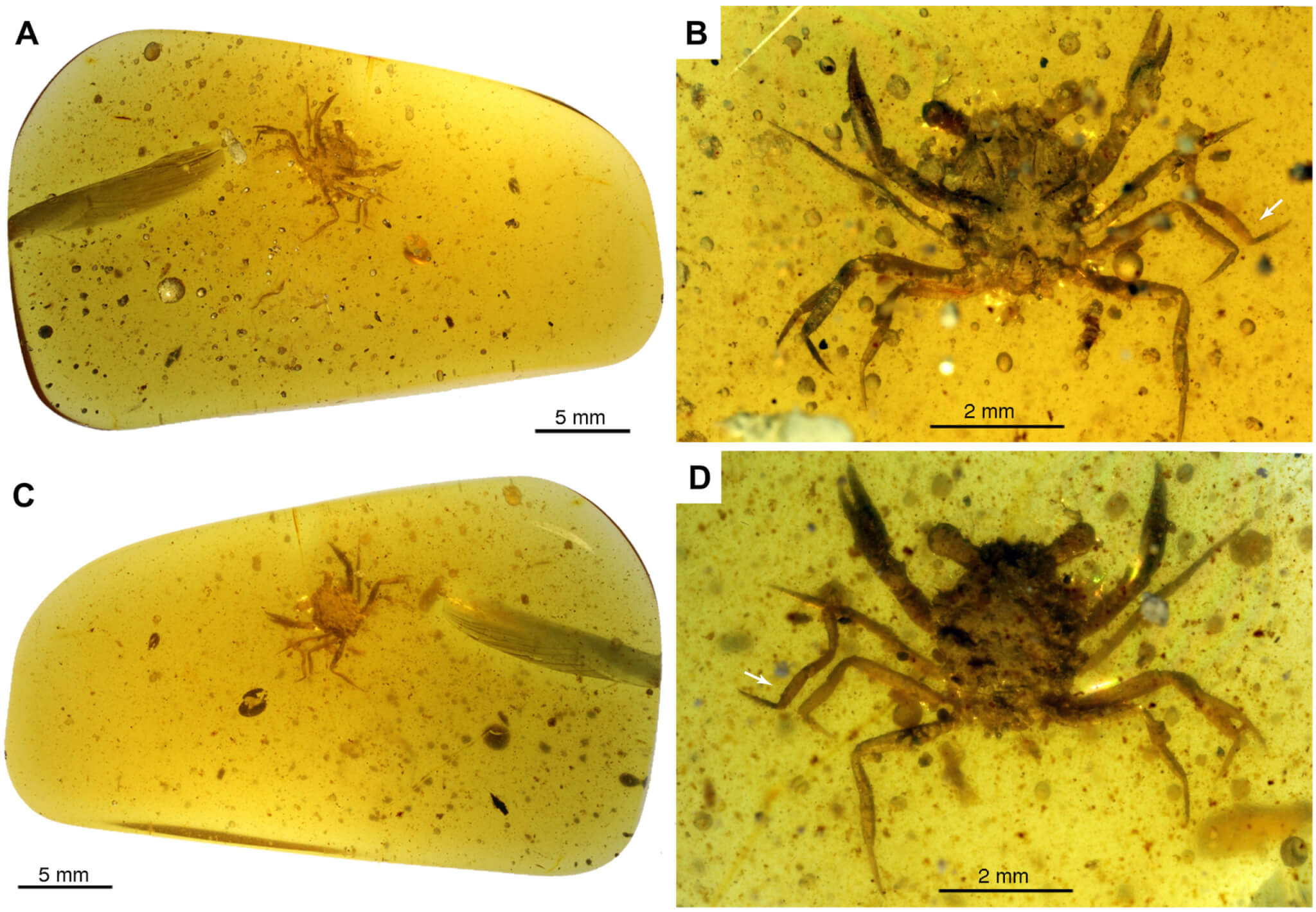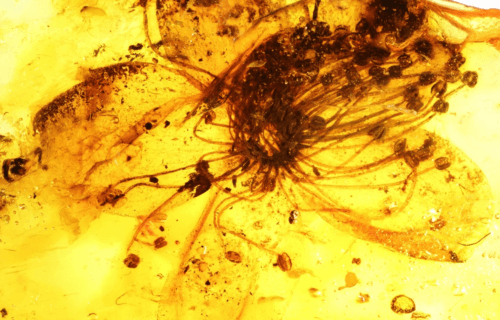BERLIN, Germany — The largest-known fossilized flower preserved in amber could help scientists discover what life was like nearly 40 million years ago.
New photographs reveal the 28-millimeter-wide bloom (roughly 1.1 inches) is nearly three times the size of other preserved flowers. Researchers say the ancient flower may have fallen from the ancient flowering evergreen Stewartia kowalewskii, grown in the Baltic forests of northern Europe.
A team from Museum für Naturkunde in Berlin and the University of Vienna reanalyzed the exceptionally large flower, first described and named in 1872, by extracting its pollen. Results show it is likely closely related to the Asian species Symplocos — leading to a new name for the flower, Symplocos kowalewskii.

Study authors Dr. Eva-Maria Sadowski and Christa-Charlotte Hofmann suggest that the rare size of this amazingly well-preserved fossil is the result of a large resin outpouring, encasing the whole, well-placed flower.
The resin, believed to have been found in open cast mines of the Samland Peninsular Kaliningrad, Russia, would have prevented organisms growing on the flower and damaging it over time.
Estimates put the fossil’s origin in the Late Eocene period, between 33.9 and 38 million years ago!

“This fossil represents the first record of Symplocaceae from Baltic amber,” the team writes in the Scientific Reports.
“The rarity of such large-sized flower inclusions is likely due to the size of the resin outpouring and its properties, which might affect the embedding of plant organs.”
“S. kowalewskii was likely a constituent of mixed-angiosperm-conifer forests in the Baltic amber source area and supports its affinities to evergreen broadleaved and mixed mesophytic forests of present-day East and Southeast Asia.”
This isn’t the oldest flower ever discovered — not even close!
Although 40 million years is a long time, the discovery of S. kowalewskii is not the most ancient flower in history.
In late-December 2020, researchers at Oregon State University announced the discovery of an ancient, yet absolutely beautiful genus and species of flower dating all the way back to the mid-Cretaceous period — that’s about 100 million years ago!
“This isn’t quite a Christmas flower but it is a beauty, especially considering it was part of a forest that existed 100 million years ago,” says George Poinar Jr., professor emeritus in the OSU College of Science, in a university release. “The male flower is tiny, about 2 millimeters across, but it has some 50 stamens arranged like a spiral, with anthers pointing toward the sky.”

Insects and tiny animals also find their way into amber
Amber is simply fossilized tree resin. However, this natural substance which oozes out of trees creates a perfect time capsule for ancient items which get in the way.
Recent studies have revealed how amber perfectly preserved unique insects and even prehistoric crabs dating back roughly 100 million years.
“The specimen is spectacular, it is one of a kind. It’s absolutely complete and is not missing a single hair on the body, which is remarkable,” says Harvard University’s Dr. Javier Luque in a statement after unearthing the oldest ever crab ancestor, dating back to the time of the dinosaurs.

South West News Service writer Pol Allingham contributed to this report.
